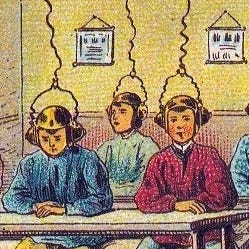From week 6 onward, we’ve been accumulating the elements of futures practice that make up the cadence of daily routines and engagements: sensemaking, scanning, events, emerging issues, trends, scenarios, alternative futures, etc. Participatory futures is an attempt to answer different questions altogether: how can we do futures work that involves as many people as possible? How can we engage all stakeholders?
Public Engagement
The British foundation Nesta put together and released an amazing guide to participatory futures, which they position as the intersection between futures studies and public engagement. For those of you that have tried to coordinate the activity of large groups of people, you know that the logistical challenges go up pretty significantly as you increase the number of people involved, especially things like coming to consensus, regulating behavior, etc. This difficulty is justified by several benefits that are hard or impossible to achieve in other ways: not only can it increase the number of perspectives involved and reduce blind spots, it can also build trust in institutions (because people really are being heard) and improve futures literacy and foresight skills in the general public. Building a compelling preferred future with public buy-in creates a future with pull that can help society mobilize to commit to difficult trade-offs.
Nesta’s work divides participatory futures work along a few dimensions. The first is to split up into 5 types of approaches. Play is a great way to get people to internalize the logic of the futures and concepts being described by experimenting and seeing how things react1. Immersion in exhibits, theater, etc, can similarly give a multi-sensory experience that connects on an emotional level. Sensing exercises bring participants along on the sensemaking or scanning journey, broadening the ideas included and building competencies. Creating objects allows people to exercise creative agency and have a tangible experience. Systems of deliberation allow individual preferences to be aggregated and for areas of consensus to emerge (or develop).
Nesta also describes various objectives that can be served by doing participatory futures work. The future can be more effectively mapped by turning the citizenry into a crowdsourcing fabric. Integration of the desires and values of the public can help create a shared vision. An inclusive group can generate ideas and priorities for how to get from the present to a preferred future. The activities can foster the first steps of further participation in creating ongoing groups and initiatives for change. Last, if particular ideas or images of the future already exist, these can be subjected to robust evaluation and feedback before being implemented.
Afrofuturism
We also had the good fortune this week to have Dr Lonny J Avi Brooks visit our class, who identifies as an Afrofuturist - doing futures work through the lens of the Black Diaspora. Afrofuturism really broke into mainstream awareness in 2017-2018, between the “There are Black People in the Future” billboards, the release of Black Panther, Android Netrunner’s Kitara Cycle taking place in Sub-Saharan Africa2, and so on. Lonny is one of those futurists that is involved in a lot of different projects - he’s a professor of communication at Cal State East Bay, he worked on a podcast (haven’t we all), he works on projects focusing on teaching futures skills to youth, and he has put a lot of energy into the game AfroRithms from the Future, which he walked us through. The foundation for the game is an adaptation of The Thing From The Future, the tool for creating future artifacts that I briefly mentioned in week 13, but it’s embedded in a larger narrative (and sometimes an immersive VR metaverse experience) that explores the ideas of Astro-Blackness through the metaphor of the Mothership, which serves as a repository of ancestral knowledge. It’s worlds away from a standard corporate scenario-writing exercise and is a perfect example of how more inclusive and participatory futures can engage more people to build more creative futures.
The guide uses the term “game” as a catch-all in this section, in what I consider to be a very loose way that I see throughout futures. I think of interactive elements for play as “toys” or possibly “role play” unless they contain goals and evaluation. I’m not 100% aligned with Chris Crawford’s taxonomy, but it points to the key concepts. I’m very interested in the potential role of games in futures, so expect more on this topic, especially this summer.
As I’ve alluded to in the past, I’m always happy to talk about Netrunner or introduce the game to someone new.



